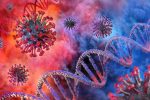N115 Nasal Spray Found to Improve Lung Function in PF Patients

Treatment with N115, EmphyCorp’s non-steroidal nasal spray, led to statistically and clinically significant improvements across all lung function parameters in patients with pulmonary fibrosis (PF) participating in a Phase 3 trial, data show.
Now, data from two other Phase 3 clinical trials suggest that N115 also may be beneficial for people infected with SARS-CoV-2, the virus that causes COVID-19, including “long haulers” — patients who continue experiencing symptoms of the disease long after testing negative. Long-term COVID-19 symptoms may include low oxygen levels, fatigue, coughing or sneezing, trouble breathing, body aches, headaches, and PF.
“Based upon the results of our three Phase III clinical trials, EmphyCorp [prescription] N115 non-steroidal nasal spray could be used as a safe, effective treatment to help alleviate the symptoms associated with COVID-19 infections, pulmonary fibrosis, and Long COVID-19 (Long Hauler) symptoms,” Alain Martin, PhD, CEO of EmphyCorp, said in a press release.
In the Phase 3 trial of PF patients, measures of lung function that improved significantly when compared with the study’s start (baseline) included forced expiratory volume in one second (FEV-1), forced vital capacity (FVC), and oxygen levels. FEV-1 measures how much air a person can exhale during a forced breath, while FVC is the total amount of air exhaled during the FEV test; both are tests to measure lung function.
Also, as previously reported, the FEV1/FVC ratio — the proportion of the total amount of air a patient is able to exhale after taking a deep breath in one second — increased from 52% at baseline to 86% after treatment with N115. The experimental therapy also was able to reduce cough and fatigue.
In a Phase 3 trial (NCT04824365) of patients with active COVID-19, treatment with N115 led to a faster reduction in viral load: less than 10,000 viral genome copies by day 6.4 versus 10.3 days in untreated patients. Of note, a reduction in viral load from more than 100,000 viral particles to less than 10,000 significantly decreases the risk of viral transmission, according to the literature.
N115 also lessened — in a clinically and significant manner — coughing and sneezing, as well as fatigue, while increasing patients’ oxygen levels.
A total of 22 COVID-19 “long hauler” patients received N115 three times daily for seven days in an open-label Phase 3 trial (NCT04871815). Patients were asked to keep a log of their symptoms.
The results showed that N115 significantly reduced coughing and sneezing, as well as headaches and body aches. The nasal spray also increased oxygen levels and improved patients’ breathing.
N115 is part of the company’s global patented Rx technology. It works by increasing the production of nitric oxide, a natural defense gas that kills disease-causing microbes, reducing the risk of infections.
“Being a non-steroidal spray that increases nasal nitric oxide is key, because nasal steroids and other OTC [over the counter] nasal treatments shut down the synthesis [production] of nasal nitric oxide, which then leads to decreased lung function and a 12%–34% increase in infections, depending upon age or underlying disease,” Martin said.







